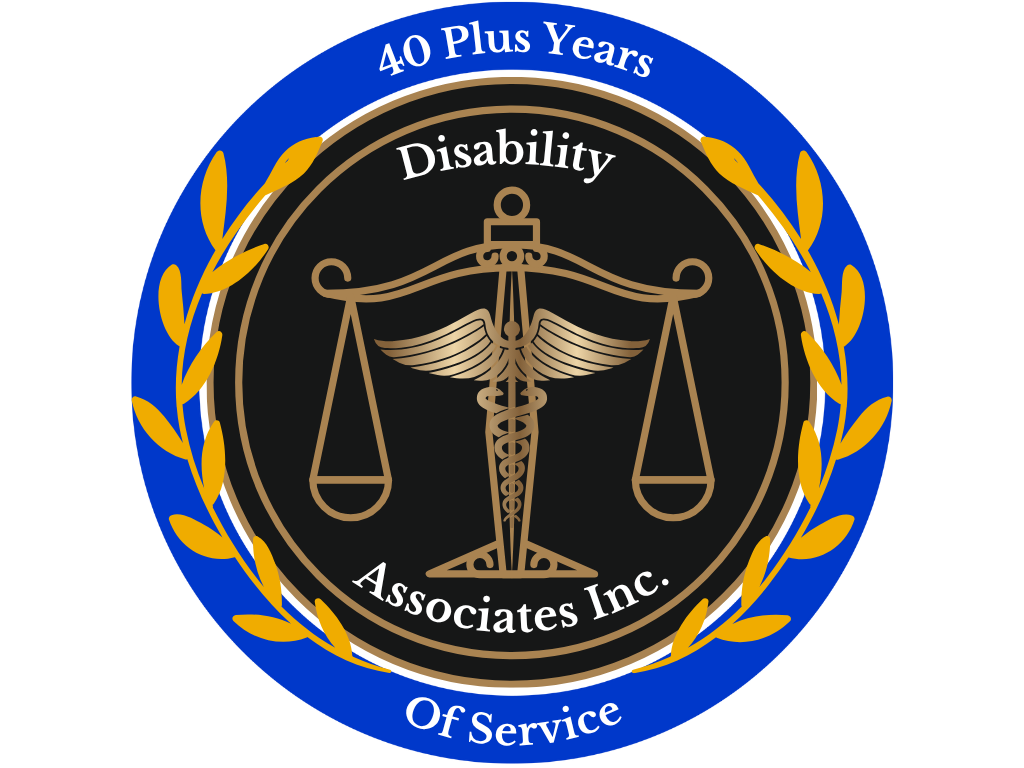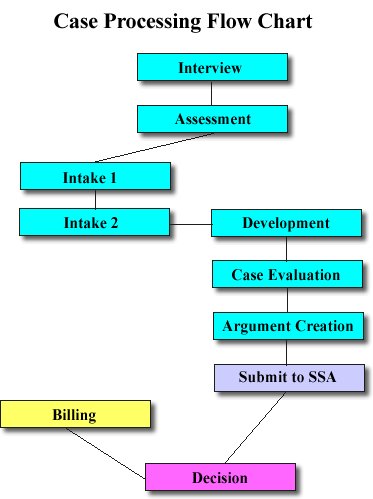Case Processing Flow
No matter what adjudicative level you’re on in the disability process, (initial, reconsideration, or Administrative Law Judge), the advocate’s actions in processing the case are basically the same.
Interview Client Phase: Regardless of the adjudicative level you enter a case, you’ll need to perform an initial interview with the client. The initial interview enables you to extract the key issues within the case. The interview also enables you to simultaneously begin the assessment process. A case assessment can be performed manually or automatically using our Olivia Prime software. If the case has at least a 70% chance of being won, we consider the case to be viable. Acceptance or Intake Phase: This process involves the exchange and completion of forms by the claimant. These forms include your instructions to the client, your contract with the client, and the required Social Security forms like the SSA-1696. Case Development: During this phase, you must collect as much medical and vocational information about your client as possible. These medical records are used in the case evaluation process. How much case development you do depends upon the adjudicative level of the case. On the initial level, you can expect to do the most case development. Less development is needed on the Reconsideration level and less still at the ALJ. Case Evaluation: Once you have your client’s medical records, this phase begins. In this phase, you review the evidence and create an argument on behalf of your client. It is during the case evaluation process that you apply the Sequential Analysis, Vocational Analysis, and physical limitation techniques as discussed in your training program.
The case argument is a document containing a complete evaluation and summation of your case. The case argument presents facts of the case within your case strategy. While preparing a case argument is not always required, it’s the only way to clearly present all of the relevant facts of the case. Ideally, the more facts presented, the more likely your client will win benefits. Once your argument is created, it’s presented to Social Security for consideration. SSA must consider your argument before making a final case determination. SSA’s requirement to consider all available evidence in a disability claim can significantly improve your chances of winning the case. Decision: You and the client should receive a decision notice from Social Security. Billing: Only if the case is allowed. The billing process is discussed in the Advocate business Guide. |


